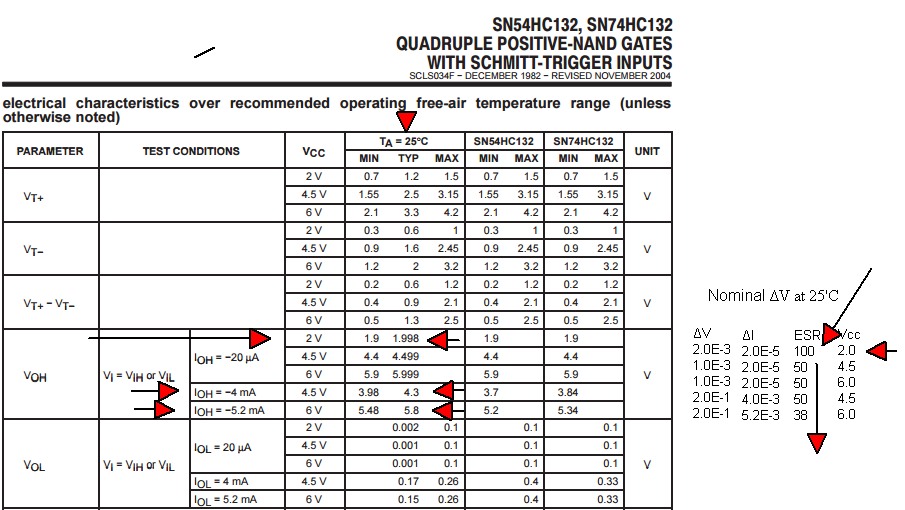RED CIRCUITS Version II uses an ordinary CD4093 Cmos gate IC and uses a 3V battery. When the battery voltage drops below 3V (it will drop to below 2V) then the CD4093 does not work. If you increase the supply to 5V (but a battery does not produce 5V) then the typical output current of the CD4093 gate will be only 3mA which is very dim. The current will be only 3mA because datasheets from Texas Instruments show it and the ESR calculates to be 1067 ohms, not 150 ohms.
My idea is to replace the CD4093 with an SN74HC132 ...
I agree but, I was assuming the same as you suggested for 2V which is the 'HC132 which typically below 150 Ω with some vendor variance.
'HC132 from TI at 2V , the ESR (or RdsOn) is 100 Ω typ. but worst case much higher which few would be but not explicitly guaranteed or spec'd as such.
ESR drops to 50Ω with higher Vcc.

Last edited:
